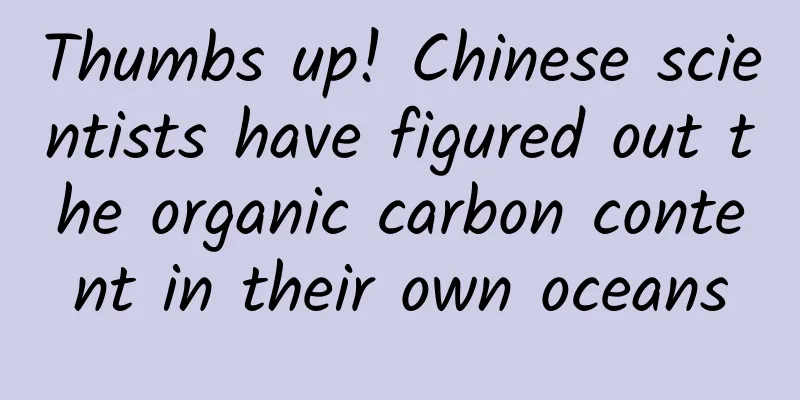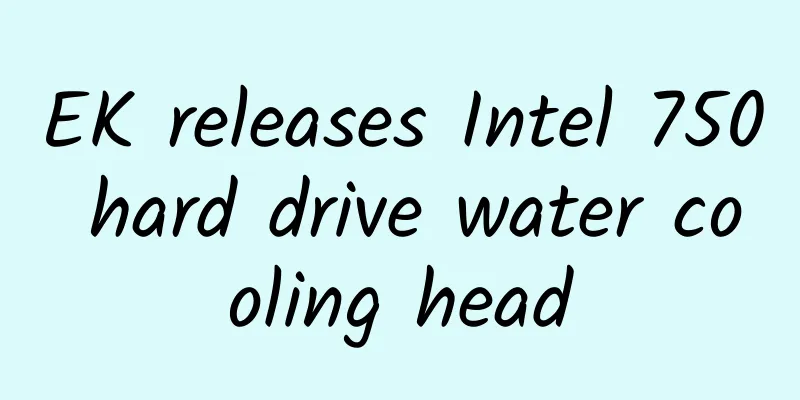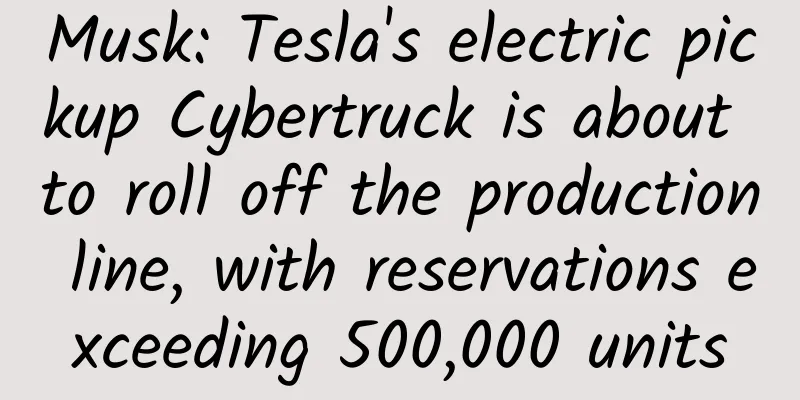Thumbs up! Chinese scientists have figured out the organic carbon content in their own oceans

|
The ocean is the largest active carbon pool on Earth, and organic carbon is an important component of the ocean carbon pool. Finding out the key information base of the ocean carbon pool and quantifying the spatial pattern of the ocean carbon pool can accurately estimate the balance of the ocean carbon pool, better understand and regulate the impact of human activities on the ocean carbon sink, and is also an important prerequisite for understanding the increase of ocean carbon sinks and achieving carbon neutrality. The Shi Xuefa research team of the First Institute of Oceanography of the Ministry of Natural Resources used the sedimentary organic carbon content and related geochemical and sedimentological parameters collected from 5796 stations in the Bohai Sea, Yellow Sea and East China Sea to summarize and explain the distribution and burial law of sedimentary organic carbon in the coastal waters of eastern China, systematically estimate the organic carbon burial flux, comprehensively evaluate the intensity of the sedimentary carbon sink effect, and basically find out the "family background" of sedimentary organic carbon in the coastal waters of eastern China : the sedimentary organic carbon burial flux in the coastal waters of eastern China is 8.20 Mt C a-1, of which the biogenic organic carbon burial flux is 6.92 Mt C a-1. Under natural conditions, the annual fixed organic carbon in the sediments of the coastal waters of eastern China is equivalent to 25.37 Mt of atmospheric CO2, which has a very considerable carbon sink effect. The relevant results were published in the Chinese and English edition of "Science China: Earth Sciences", Issue 10, 2024. Previous studies on sedimentary organic carbon in the eastern coastal waters of China only covered some regions and sediment types in space, and failed to fully combine the changes in sedimentary organic carbon with the sedimentary characteristics of the sea area, lacking a comprehensive analysis of the sedimentary process and environment of the sea area. The main problems are: on the one hand, the distribution characteristics and change patterns of sedimentary organic carbon in the Bohai Sea, the Yellow Sea and the East China Sea have not been fully described; on the other hand, there has been no systematic and detailed calculation of the burial amount, source and balance of sedimentary organic carbon, especially no research and discussion based on the balance of sediment mass, only very rough estimates have been made, and no accurate data has been given. Therefore, it is very necessary to systematically carry out research on the distribution characteristics and change patterns of sedimentary organic carbon in the Bohai Sea, the Yellow Sea and the East China Sea, and to accurately estimate the burial flux and carbon sink potential of organic carbon in the sediments of the Bohai Sea, the Yellow Sea and the East China Sea. Based on the 1:1 million " Sediment Type Map of the Bohai Sea, the Yellow Sea and the East China Sea" compiled and published in recent years and the results of modern sediment budget research in the Bohai Sea, the Yellow Sea and the East China Sea, Shi Xuefa, a researcher, Wu Bin, an associate researcher, Qiao Shuqing and other researchers from the First Institute of Oceanography, Ministry of Natural Resources, used the sedimentary organic carbon (5796 stations) and its related parameter data set with the widest coverage and highest sampling density in the sea area to date (Figure 1) to clarify the distribution characteristics and controlling factors of sedimentary organic carbon in the coastal waters of eastern China. Based on the sediment budget balance of the sea area, the sedimentary organic carbon burial flux in the coastal waters of eastern China was obtained, and it was proposed that organic carbon burial on a century-long scale mainly occurs in seven major mud areas (Figure 2). Fig. 1 Sedimentary organic carbon and related parameters in the Bohai Sea, the Yellow Sea and the East China Sea (a) Organic carbon content; (b) Carbon-nitrogen ratio; (c) δ13C; (d) Terrestrial organic carbon ratio; (e) Marine organic carbon ratio; (f) Δ14C; (g) Organic carbon age; (h) Black carbon The distribution trend of organic carbon content in the Bohai Sea, the Yellow Sea and the East China Sea is closely related to the distribution of fine-grained components, forming a distribution pattern in which TOC content is relatively high in muddy sedimentary areas, while it is generally low in non-muddy areas such as the eastern and northeastern Bohai Sea, the central and eastern northern Yellow Sea, the Subei Shoal and the middle and outer continental shelf of the East China Sea (Figure 1a). The muddy sedimentary areas of the Bohai Sea, the Yellow Sea and the East China Sea are the main burial areas of sedimentary organic carbon in the eastern coastal waters of my country (Figure 2). Based on the sediment budget, the organic carbon burial fluxes in the muddy areas of the Bohai Sea, the Yellow Sea and the East China Sea are 1.30 Mt C a-1, 2.71 Mt C a-1 and 4.19 Mt C a-1, respectively, totaling 8.20 Mt C a-1, accounting for about 5.3% of the global seafloor organic carbon burial flux. Biogenic organic carbon represents the sedimentary organic carbon component that has a direct effect on reducing atmospheric CO2. The biogenic organic carbon burial fluxes in the Bohai Sea, Yellow Sea, and East China Sea are 1.08 Mt C a-1, 2.37 Mt C a-1, and 3.47 Mt C a-1, respectively, totaling 6.92 Mt C a-1. This flux is significantly higher than the blue carbon sinks in wetlands such as mangroves (~0.09 Mt C a-1), salt marshes (0.26 Mt C a-1), and seagrass beds (~0.01 Mt C a-1) in China's coastal waters, and is comparable to the silicate weathering intensity of the nine major river basins in eastern my country (5.05~7.52 Mt C a-1). Under natural conditions, the organic carbon that can be fixed in sediments in the eastern China coast is equivalent to 25.37 Mt of atmospheric CO2 each year, which has a very considerable carbon sink effect. Fig. 2 Modern sedimentation rate (a), organic carbon burial rate (b), terrigenous organic carbon burial rate (c), marine organic carbon burial rate (d) and black carbon burial rate (e) in the Bohai Sea, the Yellow Sea and the East China Sea The distribution and burial of terrigenous organic carbon in the Bohai Sea, the Yellow Sea and the East China Sea are mainly controlled by the transport process of large rivers and the complex hydrodynamic environment of the sea area. Most of the particulate organic carbon input by large rivers such as the Yellow River and the Yangtze River is adsorbed in fine-grained sediments and deposited in muddy areas. The shallow water depth, high inert terrigenous organic carbon input and stable sedimentary environment in the Bohai Sea and the Yellow Sea are more conducive to the preservation of organic carbon; the East China Sea has a wide continental shelf and is affected by a strong dynamic environment. The sediment resuspension and re-transportation are strong, and the sedimentary environment is changeable, which intensifies the migration and transformation of organic carbon, resulting in a low preservation efficiency of terrigenous organic carbon (Figure 3). Human activities such as damming have significantly reduced the flux of sediments from rivers into the sea. Comparing the burial flux of organic carbon from different sources before and after damming in the basin, it was found that the burial flux of terrigenous organic carbon, biogenic organic carbon and rock-derived organic carbon all decreased by more than 60% after damming, indicating that damming activities have significantly reduced the burial of organic carbon in the coastal waters of eastern China. With the increase in dam construction in river basins in the future, the amount of sediment and organic carbon entering the sea will continue to decrease, which may have a profound impact on the distribution and burial pattern of sedimentary organic carbon on the continental shelf near the eastern coast of my country. Fig. 3 Schematic diagram of organic carbon budget and burial environment in muddy sedimentary areas of Bohai Sea, Yellow Sea and East China Sea (organic carbon flux unit: Mt C∙a-1) The research results show in detail the distribution, burial characteristics and laws of sedimentary organic carbon in the Bohai Sea, the Yellow Sea and the East China Sea, give the sedimentary organic carbon burial flux relatively accurately, estimate the intensity of the carbon sink effect, and basically figure out the "family background" of sedimentary organic carbon in the Bohai Sea, the Yellow Sea and the East China Sea. For more details, please read the original article: Shi Xuefa, Wu Bin, Qiao Shuqing, Yao Zhengquan, Hu Limin, Bai Yazhi, Hu Shan, Sheng Jie, Liu Yanguang, Liu Shengfa, Wang Kunshan, Zou Jianjun. 2024. Distribution, burial and carbon sink of sedimentary organic carbon in the eastern China coast. Science China: Earth Sciences, 54(10): 3113‒3133 |
Recommend
Qingdao Doublestar paid a high price for the acquisition, but why did South Korea's Kumho still refuse to comply?
After overcoming many hurdles in its acquisition ...
Sand and dust: I left. I am back again... Netizens: Is this "returning sand"?
Starting in the evening of April 12 Beijing's...
What procedures are required to use the local classified information mini program?
With the increasing popularity of mini programs, ...
Spring Festival Marketing: Focus on Online, Breakthrough Offline
Despite the impact of the epidemic, the Spring Fe...
5 steps to quickly write high-conversion information flow advertising copy
Many friends often complain to me: " Informa...
APP Operation Tips | App Store "Clear Words" Remediation Guide!
As an APP promotion and operation, keyword covera...
How to book COVID-19 vaccine with Alipay? How to book vaccine online
We all know that getting vaccinated in advance is...
2018 Global & Chinese Search Engine Market Share Rankings!
After doing promotion for so long, do you know wh...
Want to be a behind-the-scenes hero of a super project? Learn more about bridge and tunnel engineering!
Reviewer: School of Civil Engineering, Southwest ...
China Automobile Dealers Association: 2019 National Automobile Dealers Survival Status Survey Report
The report pointed out that the automobile consum...
Pinduoduo's operation ideas for new stores
Now with the development of the Pinduoduo market ...
I have a bad memory and forgot to take my medicine. Should I take double the dose or just not take it?
As people age, many middle-aged and elderly peopl...
Which version of iPhone 6S is the best?
iPhone 6s has been on the market for more than two...
You think your brain neurons are chaotic and disordered, but they are actually silently performing "collective actions"
Wang Linlin Liu Chuanbo Understanding how the bra...
GAC Honda announces acquisition of Honda China
Recently, GAC Group officially announced that its...









